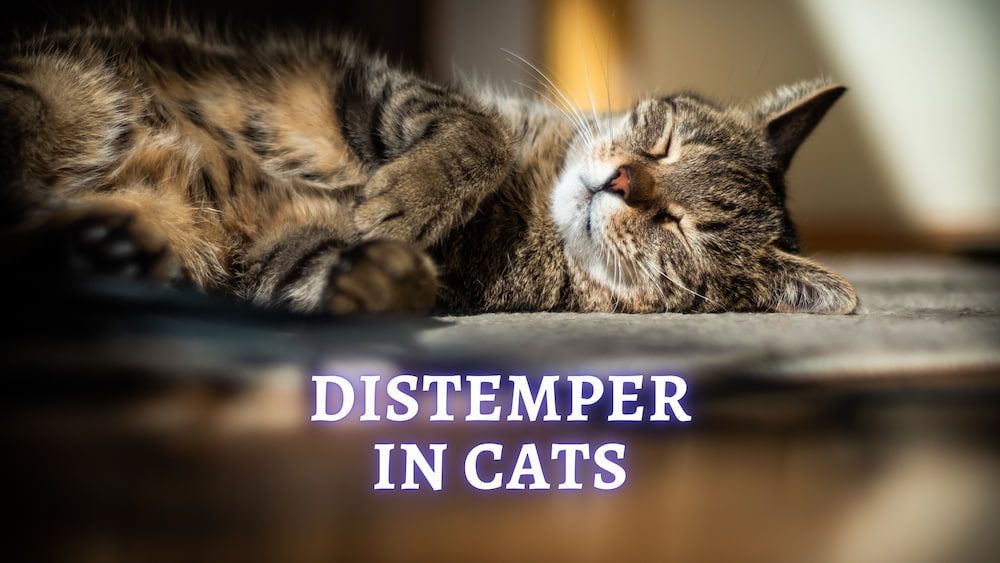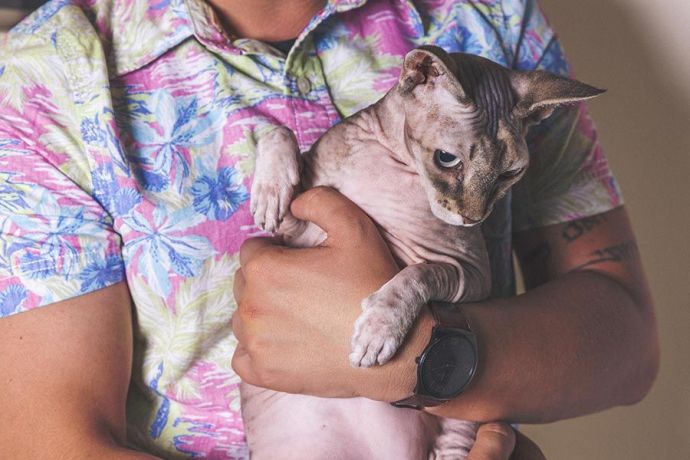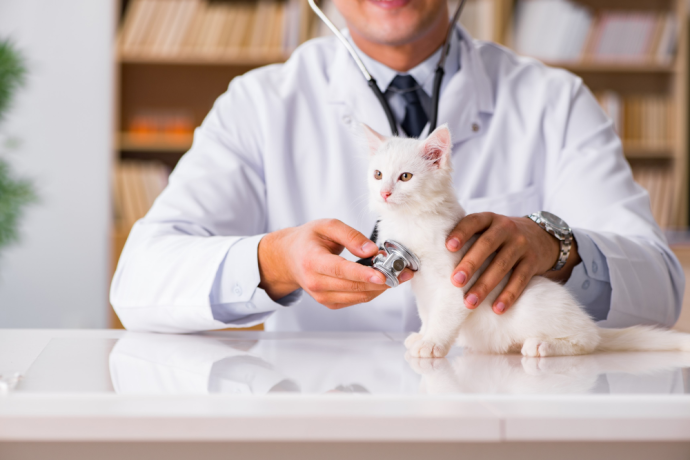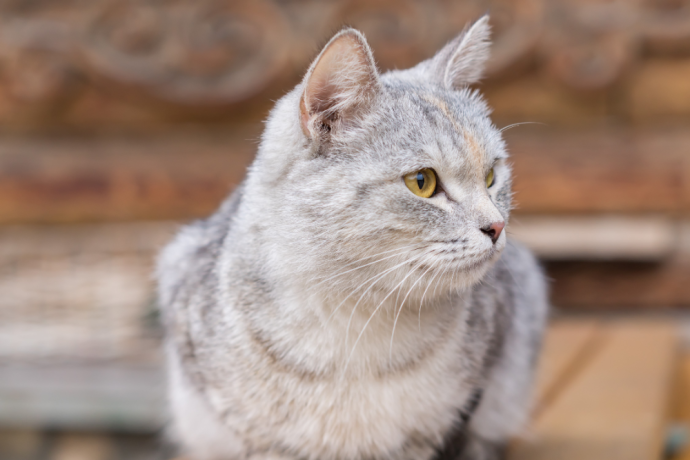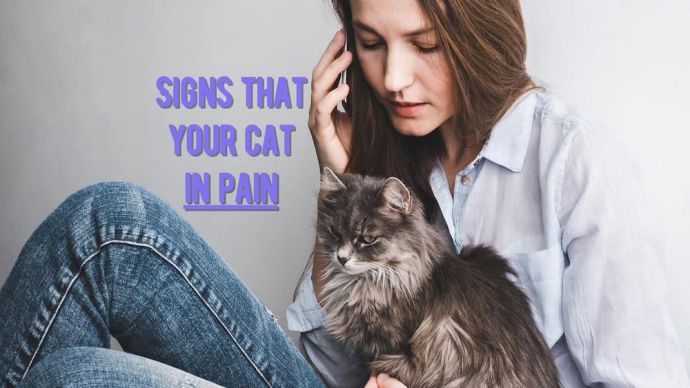Distemper in Cats: What is Feline Panleukopenia? Causes, Signs, Diagnosis and Treatment
Written by:
Author: Dr. Linda Simon
Dr. Linda Simon is a veterinary surgeon working with seven years of experience. She is a fellow of the British Veterinary Association and specializing in animal medicine. Also, she has been the Woman magazine resident vet for the past two years and writes a regular column for them, focusing on pets and their health.
View all 30 articlesLearn about our editorial process and veterinary review board.
Viewed: 170
Updated on: 08/26/2022
What causes distemper in cats?
Feline panleukopenia virus, or Feline Distemper, is a viral infection of cats. It is an RNA virus, similar to that responsible for canine Parvovirus. Indeed, some people will refer to this disease as Feline Parvovirus.
While so many names for the same viral infection can confuse, there is no difference between feline distemper, feline panleukopenia and feline parvovirus. Importantly, these diseases are not the same as either feline leukemia virus or feline immunodeficiency virus.
Frustratingly, this is a robust virus that can live for a long time in the environment and is not easy to eradicate. Amazingly, they are resistant to freezing temperatures and even to some disinfectants used in households (diluted bleach is advised).
How do cats get infected with the feline panleukopenia virus?
An infected cat will shed viral particles in their bodily fluids, including their feces, urine and nasal discharge. It is possible for a cat to shed for up to 6 weeks. [1] These viral particles can transmit to kittens or cats from direct contact, but they can also pick them up from items (or fomites) such as food, water bowls, or even the owners’ shoes and clothes.
The fecal-oral route is the most common mode of transmission. Kittens and cats are usually infected through their nose or mouth. Those with weakened immune systems are most at risk. After infecting the body, the virus spreads into places including the bone marrow and intestinal tract, where it wreaks havoc. These are places where there are rapidly dividing cells.
It is also possible for a fetus to become infected when the mother cat is pregnant with them. This can result in abortion, though this is not always the care. If infection occurs early on, the litter will likely be aborted. Later on, abortion is less likely, but the kittens may then develop associated issues.
On top of the above transmission routes, the infection can be spread to the young when an affected mother cat is nursing them.
Of course, unvaccinated cats are most at risk, so it is advised that all young kittens be vaccinated from 9 weeks of age.
READ MORE: When do Kittens get their First Shots?
Symptoms seen in infected cats
The symptoms are not specific to this disease but will be suspected by the veterinarian if the history fits. Some of the more common symptoms include:
- Sneezing and nasal discharge
- Poor appetite and reluctance to drink
- Dehydration (dry gums and sunken eyes)
- Lethargy
- Vomiting and diarrhea (which may be bloody)
- Weakness
- Abdominal pain
- High fever
Oftentimes, the cat initially seems to have a respiratory infection. Still, signs then progressively worsen and it is clear that it is more than just the respiratory tract affected.
Significantly, those kittens who are affected in the uterus may go on to develop a characteristic condition known as Cerebellar Ataxia. These kittens may seem okay at first but will soon begin to struggle with their balance, fall over and suffer from tremors.
While Cerebellar Ataxia can look quite dramatic, cats are born with it, so they don’t know any difference, and many cope very well with this balance disorder. These cats can live relatively normal lives without needing specific treatment. Owners should keep these cats inside to protect them from predators, bully cats and vehicles. Also, they are not good at judging distances, so they would be at risk if they attempted to jump from a wall or another height.
How is the feline distemper virus diagnosed?
Most vets will be suspicious of this condition if the kitten or cat is not vaccinated and they are showing the typical signs. The diagnosis is likely if a blood test shows very reduced white blood cell levels. We can also isolate the virus using fecal snap and PCR testing if desired, though this is not always done.
In a shelter setting, it is especially important to know what we are dealing with, so the other cats can be protected as much as possible and staff know to take extra precautions. In this scenario, getting a definitive diagnosis is advised.
RELATED: Ask a Vet Question Online
How to treat feline panleukopenia?
This highly contagious viral disease is not easily treated, and there is no guarantee of recovery. This is true even with prompt therapy.
Sadly, as with most viral infections, there is no antidote or specific treatment. Rather, we offer supportive care in the hope that the feline is strong enough to mount an immune response themselves.
Any secondary bacterial infection is treated with antibiotics. The patient may initially need aggressive therapy, including intravenous fluids, syringe feeding, anti-nausea medicine, an antipyretic, etc.
Kittens and cats must be treated in isolation to protect other nearby felines. When in a vet clinic, they should have dedicated nurses and PPE must be used. Once an animal recovers, they may still be shedding viral particles for some weeks, so precautions must still be taken.
In some instances, the veterinarian will offer anti-virals such as recombinant feline interferon omega when the cat is very poorly, the product is available and the owner (or shelter) can fund this treatment. [2]
READ MORE: Can Cats Have Down Syndrome? (Vet Advice)
How to prevent feline distemper?
By far, the best way to prevent feline distemper is by ensuring all kittens and cats are vaccinated. Vaccinations should not be delayed, as kittens are at the highest risk of catching the disease in their first few months of life. A cat needs at least two doses when they first get the vaccine, followed by a booster 12 months later. We then advise vaccinating every 2-3 years.
Owners must understand that no vaccine can ever be 100% effective. We should not see the vaccine as a ‘carte blanch’ to have your pet around sick animals! We still need to quarantine any new arrivals to the home and ensure our pets have no contact with those who are known to have feline distemper.
When in catteries, groomers and vets, your cat should be kept separately from other animals. All people should wash their hands thoroughly when moving from one cat to another.
People also ask
Can a cat survive distemper?
Yes, absolutely, this is a disease that a cat can potentially fight. However, the death rate is relatively high, especially if the cat is very young when infected and if they present with severe signs. A cat’s immune system needs to be robust before encountering this virus if they are to stand a good chance of surviving it.
Once your pet survives the initial feline distemper infection, they should develop lifelong immunity and should not become infected again.
For the best chance of recovery, the sooner cats are treated, the better. Those who are in otherwise good health have the best chance of recovery. Recovery rates vary depending on the viral strain.
While the cat will spread the feline distemper virus in the initial days and weeks of their infection, they will no longer shed it once the infection resolves completely.
How do cats get distemper?
Cats can get distemper from contact with the bodily fluids of those who are already infected with feline distemper. They can also become infected in utero or from their mother’s milk while nursing.
There is no risk of a cat becoming infected by a dog who has canine distemper virus.
Can indoor cats get distemper?
Indoor cats can become infected with feline distemper virus if they have contact with an infected cat or if the viral particles are present within the home. For this reason, infections are more common in multi-cat households or in homes where a cat has previously been infected.
Indoor cats can also become infected when they go to places other cats go, such as groomers, catteries, animal shelters, or vet clinics. For this reason, the feline panleukopenia vaccination schedule is advised for both indoor and outdoor felines.
How do you get rid of Feline panleukopenia in cats?
The best way to try to eradicate viral infections like feline panleukopenia is with a robust vaccine protocol that is adhered to by as many cats as possible. Unvaccinated animals spread the feline panleukopenia virus to others in the area, meaning the infection persists.
This is a disease that is far easier to prevent than it is to treat. With such a high mortality rate, vaccinating really is crucial.
For the individual patient who is infected, the aim is to support them while their own immune system fights the virus. An infected cat needs time and supportive care while they overcome feline panleukopenia.
Article Sources:
- “Feline Infectious Enteritis (Parvovirus, Panleukopenia Virus).” International Cat Care, icatcare.org/advice/feline-infectious-enteritis-parvovirus-panleukopenia-virus/.
- Porporato, Federico, et al. “Survival Estimates and Outcome Predictors for Shelter Cats with Feline Panleukopenia Virus Infection.” American Veterinary Medical Association, avmajournals.avma.org/view/journals/javma/253/2/javma.253.2.188.xml.
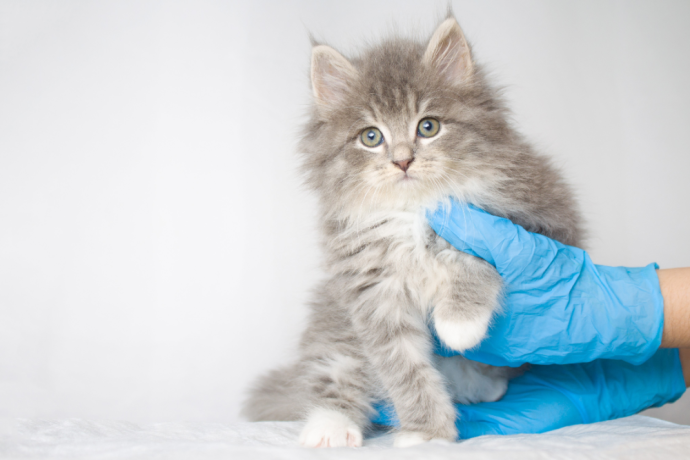 Cat Veterinary Tips Dehydration in Cats: Causes, Signs, Symptoms, and Treatment
Cat Veterinary Tips Dehydration in Cats: Causes, Signs, Symptoms, and Treatment - 365
- 0
 Cat Care Why Does My Cat Attack My Legs? 10 Reasons Why and What To Do About It (Vet-Approved Advice)
Cat Care Why Does My Cat Attack My Legs? 10 Reasons Why and What To Do About It (Vet-Approved Advice) - 45082
- 21
 Cat Veterinary Tips Cat Stomach Gurgling: Vet Advice on Why is Your Cat Stomach Gurgling?
Cat Veterinary Tips Cat Stomach Gurgling: Vet Advice on Why is Your Cat Stomach Gurgling? - 33734
- 4
 Cat Veterinary Tips My Cat Lost its Voice: Can Cats get Laryngitis? (Vet Advice)
Cat Veterinary Tips My Cat Lost its Voice: Can Cats get Laryngitis? (Vet Advice) - 22891
- 13









